Research Articles
Review Article
Teorik Makale
Translation
Interview
Review
Book Review
Issue Editorial Board



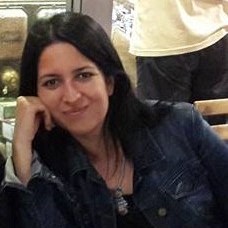
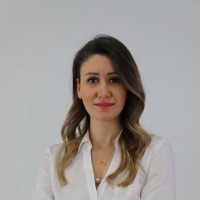
Prof. Dr. Elif Eşiyok Barut, Atılım Üniversitesi Halkla İlişkiler ve Reklamcılık Bölümü'nde öğretim üyesi olarak görev yapmaktadır. Elif Eşiyok'un çalışmaları, medya kullanımı ve beden imajı, tüketici etiği ve materyalizm gibi konulara odaklanmaktadır.

Edirne'de doğdu. İlk ve orta öğrenimini Edirne'de tamamladı. 2003 yılında Marmara Üniversitesi İletişim Fakültesi Gazetecilik Bölümü’nden mezun oldu. Trakya Üniversitesi Sosyal Bilimler Enstitüsü Kamu Yönetimi Anabilim Dalı’nda yaptığı “Siyasal Partilerin Politik Pazarlama Uygulamaları ve Bu Uygulamaların Seçmenler Üzerindeki Etkileri ve Bir Uygulama” başlıklı çalışmasıyla 2006’da yüksek lisansını bitirdi. Marmara Üniversitesi Sosyal Bilimler Enstitüsü Genel Gazetecilik Anabilim Dalı’nda başladığı doktora eğitimini Prof. Dr. Şengül Özerkan danışmanlığındaki “Demokratik Açılım ve Çözüm Sürecinde Akil İnsanlar” başlıklı teziyle 2018 yılında tamamladı. 2024 yılında Gazetecilik ve Medya Çalışmaları alanında doçent unvanı almaya hak kazandı. 2009 yılından bu yana Trakya Üniversitesinde görev yapmakta olan Doç. Dr. Demir, çevrimiçi taciz, yurttaş gazeteciliği, dijital medya, kültürlerarası iletişim ve kamusal alan üzerine çalışmalarını sürdürmektedir. Evli ve iki çocuk annesidir.

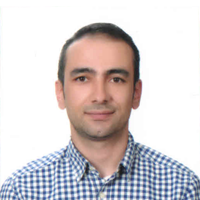

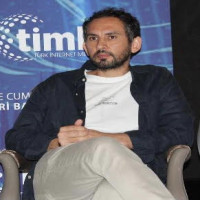
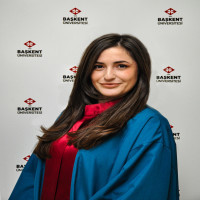
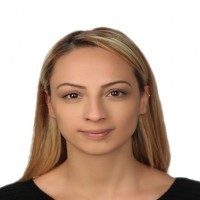
Issue Reviewers

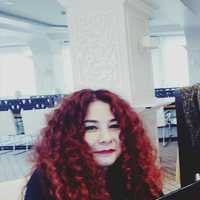



 Web
Web
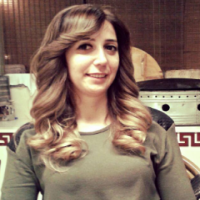

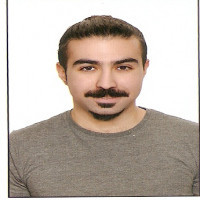
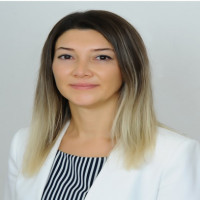
1994 yılında Ege Üniversitesi İletişim Fakültesi Radyo Televizyon Sinema Bölümünden mezun oldu. 1998 yılında aynı üniversitenin Sosyal Bilimler Enstitüsü Gazetecilik Ana Bilim Dalından yüksek lisans derecesi aldı. 2000 yılında Erciyes Üniversitesi Güzel Sanatlar Fakültesi Sinema TV Bölümünde öğretim görevlisi olarak göreve başladı. 2017 yılında Erciyes Üniversitesi Sosyal Bilimler Enstitüsü Gazetecilik Anabilim dalında doktorasını tamamladı. Aynı yıl Çukurova Üniversitesi İletişim Fakültesi Gazetecilik Bölümüne yardımcı doçent olarak atandı. 2021 yılında Doçent Unvanı aldı. Halen Çukurova Üniversitesi İletişim Fakültesi Gazetecilik Bölümünde doçent olarak görev yapmaktadır


İngilizce
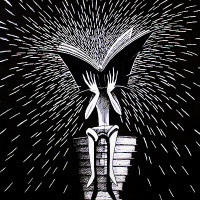




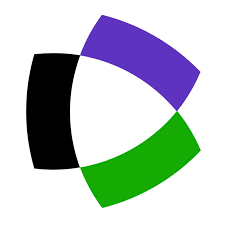
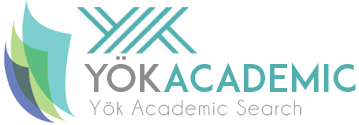 Web
Web
The designer was born in Bodrum and studied painting in high school. He later earned his bachelor's, master's, and proficiency in art degrees in graphic design from Dokuz Eylül University, Muğla Sıtkı Koçman University, and Anadolu University. Throughout his career, he gained experience as a graphic designer both in Turkey and abroad. He currently works as an academic.
For more details: htps:/linktr.ee/mustafaakman


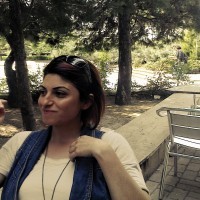

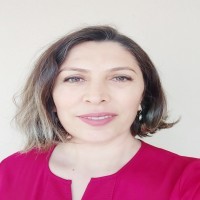





1988 İstanbul doğumlu Doç. Dr. Tamer Bayrak, İstanbul Kültür Üniversitesi İletişim Fakültesi İletişim Tasarımı Bölümü’nden lisans mezunu olmuştur. Yüksek Lisans eğitimini İstanbul Kültür Üniversitesi Sosyal Bilimler Enstitüsü İletişim Tasarımı Programı’nda tamamlamıştır. Doktora eğitimini İstanbul Aydın Üniversitesi Sosyal Bilimler Enstitüsü Halkla İlişkiler ve Tanıtım bölümünde göz izleme teknolojisi üzerine yazdığı doktora teziyle tamamlamıştır. 2017-2020 yılları arasında İstanbul Aydın Üniversitesi İletişim Fakültesi Yeni Medya ve İletişim Bölümünde Araştırma görevlisi ve doktora sonrası bölüm başkanı ve VRlab (Sanal Gerçeklik Laboratuvarı) kurucusu olarak görev alan Bayrak, 2022 yılından itibaren Çanakkale Onsekiz Mart Üniversitesi İletişim Fakültesi Yeni Medya ve İletişim Bölümü Öğretim Üyesi olarak görev almış, Dekan Yardımcılığı, Bölüm Başkanlığı ve Bölüm Başkan Yardımcılığı görevlerinde bulunmuştur. Bayrak’ın “Sanal Dünyada Yeni Şiddet”, “Sanal Gerçeklik-VR”, “Yeni Medya Kuramları 101” ve “Yapay Zeka Yapay İletişim” isimli kitapları bulunmaktadır. Bayrak’ın ayrıca kısa metrajlı filmleri bulunmakta, bununla birlikte Sanal Gerçeklik Teknolojileri, Beyin Dalgaları Analizi, Göz İzleme Teknikleri, Yeni Medya, Dijital Oyunlar, Teknolojik Determinizm, Sosyal Medya, Gözetim Toplumları, Araştırma Yöntemleri, Medya Okuryazarlığı, Teknolojik Obezite, Oyunlaştırma, Yapay Zeka ve İletişim üzerine çalışmalar yapmakta ve uygulamalı – kuramsal eğitimler vermektedir. YÖK tarafından yetkilendirilmiş olan İLEDAK (İletişim Eğitimi Değerlendirme Akreditasyon Kurulu) değerlendiricisi olan Bayrak, Journal of Communication Science Researches dergisi editörü ve AI Labs Bilişim Yazılım ve Yönetim Danışmanlığı Hizmetleri şirketinin kurucu ortağıdır.





 Web
Web
2005’te Afyon Kocatepe Üniversitesi Sosyal Bilgiler Öğretmenliği, 2010’da ise Ege Üniversitesi İletişim Fakültesi Radyo Televizyon ve Sinema Bölümü lisans öğrenimini birincilikle tamamladı. Ege Üniversitesi Sosyal Bilimler Enstitüsü, Radyo Televizyon ve Sinema Anabilim Dalı’nda yüksek lisans, İstanbul Üniversitesi, Sosyal Bilimler Enstitüsü, Radyo Televizyon ve Sinema Anabilim Dalı’nda doktora derecesini aldı. 2020 yılında İletişim Çalışmaları alanında doçent unvanını aldı. Belgesel sinema, yeni iletişim teknolojileri, iletişim kuramları, sosyal medya ve iletişim sosyolojisi alanında çalışmalar yapan Akmeşe’nin iletişim alanında ortak yazarlı birçok çalışması, uluslararası kongre ve sempozyumlarda sunduğu bildirileri, ayrıca danışmanlık yaptığı sinema projeleri ve yönetmen olarak yer aldığı pek çok film çalışması bulunmaktadır. Bugüne dek sekiz kısa filme ve beş belgesele imza attı. Belgesel çalışmaları birçok ulusal ve uluslararası festivalde gösterildi. 2013 yılından buyana Dicle Üniversitesi İletişim Fakültesi Radyo Televizyon ve Sinema Bölümü’nde akademik çalışmalarını sürdüren Akmeşe, akademik çalışmaların yanı sıra Radyo Televizyon ve Sinema Bölüm Başkanlığı görevini de yürütmektedir.
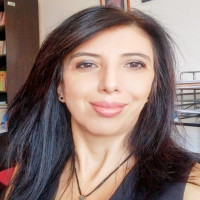
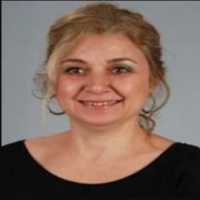


Aim & Scope
New Media/Yeni Medya is a peer-reviewed, electronic, international journal that concentrates on and publihes studies in the fields of communication research, technology, and digital culture twice a year (Fall / Spring).
In the special issues we particularly focus on, different we also consider alternative articles for publication.
New Media/Yeni Medya examines the digital media ecosystem around special topics such as new technologies, transformations and regulations within the digital media industry while identifying and addressing wider socio-cultural, economic, and political problems and objections.
The journal aims to contribute to the academic knowledge about new media through original studies and convey current approaches and research topics to relevant academics.
Thus, it aims to participate in the academic discussion in the theoretical or practical research perspectives.
Having an interdisciplinary perspective in line with these purposes, New Media/Yeni Medya welcomes original works from social sciences and humanities such as communication, media and cultural studies, sociology, geography, anthropology, economics, political science, and information / document management.
New Media/Yeni Medya is a peer-reviewed, electronic, international, free of charge, and open-access journal published twice a year by Ankara Hacı Bayram Veli University's Faculty of Communication.
Studies that raise, point, and discuss ethical and legal problems, social transformation, concepts, and approaches as a consequence of the new media --both theoretically and empirically --are published in the journal.
Articles submitted to the journal must be in Turkish or English.
Research articles, reviews, interviews, letters, translations, and book reviews in the field of new media in accordance with the original, scientific publication qualities and publication principles could be submitted.
The main topics that could be published within the scope of the journal are:
• New Media (in relation to its individual, social, cultural, technological, economic, and political reverbarations etc.)
• Internet and mass media (video broadcasting, internet journalism, computer games, digitalization in cinema, television, and radio)
• Digitalization and convergence (comparative studies with traditional media, ethical and legal regulations in digital media, etc.)
• Social media and mobile communication (social media platforms, mobile applications, etc.)
• Digital culture and network society (transformation observed in society in the digital age, surveillance society, networked public, interaction, etc.)
• Usage practices and digital inequalities
• Human-machine communication, machine-to-machine communication, IoT
Author Guidelines
NEW MEDIA / YENI MEDYA JOURNAL AUTHOR GUIDELINES
Important Note: Jounal Guidelines blow should be considered in all citations, references and formal elements. APA 7 will be considered for other matters not included in the guidelines.
The authors to submit their papers in New Media / Yeni Medya journal are first strictly required to use the template file, the link of which is given in this announcement section. The papers which are not transformed into the template file and do not follow the format will not be taken into account for the editorial process. The manuscripts should be in Microsoft Word format. Authors must use the bibliographic and formatting standards set out by Publication Manual of the American Psychological Association, 7th edition, 2010.
Research articles sent to the Journal should not exceed 10.000 words including Bibliography (excluding the Extended Abstract). Manuscripts other than research articles are advised not to exceed 2.000 words. Manuscripts should include both Turkish and English abstracts and each of them should not exceed 250 words (The maximum number of words allowed for the total of English and Turkish abstracts is 500). Each manuscript should contain both Turkish (Öz) and English (Abstract) summaries with 5 keywords.
Both Turkish and English articles must include an Extended Abstract of 750 - 1,000 words. Turkish articles should include an extended abstract in English and English articles should include an extended abstract in Turkish. The manuscripts without Extended Abstract will not be taken into account for the editorial process. Extended Abstract should contain the purpose, scope, theoretical framework, methodology, findings, and conclusions of the manuscript and represent the whole content of the article.
Each manuscript should include a title and abstract, and keywords both in Turkish and English. Introduction, Review of Literature, Methodology, Results, Discussion and Conclusion, References, and Extended Abstract are expected to be written as in the listed order.
Page Layout: The main text format consists of flat left-right columns on A4 paper (quarto). The margin text from the left and right are 3 cm, the margin text from the top is 4 cm, and from the bottom is 3 cm. The manuscript is written in Microsoft Word, single space, Times New Roman 12 pt with 1 cm indention at each paragraph. The block quotations are to be Times New Roman 10 pt with 1 cm indention from the left. If any, the footnote part is to be Times New Roman, 9 pt. Tables and Figures are presented Times New Roman 10 pt and cited in the manuscript before appeared.
Word Limits: Research articles sent to the Journal should not exceed 10.000 words in length including Bibliography (excluding the Extended Abstract). Manuscripts other than research articles are advised not to exceed 2.000 words. Manuscripts should include both Turkish and English abstracts and each of them should not exceed 250 words. Extended Abstract in English (between 750-1.000 words) is mandatory for Turkish manuscripts.
Keywords: Each manuscript should contain 5 keywords written below the abstracts written both in Turkish and English. Commas should be used between the keywords. The initials of keywords should be uppercase.
Article format / general structure: Each manuscript should include Turkish title and abstract with keywords, English title and abstract with keywords, Introduction, Review of Literature, Methodology, Results, Discussion and Conclusion, References, and Extended Abstract as in the listed order.
Extended Abstract should contain the purpose, scope, theoretical framework, methodology, findings, and conclusions of the manuscript and represent the whole content of the article.
Personal information: Journal has a double-blind peer-review system. Hence, the submitted articles and manuscripts should not contain any personal information of the author(s). A title page including personal information of the author must be submitted to the system separately from the article. This title page is to include the title of the study in Turkish and English, name and title of the author, affiliation and contact information (e-mail, phone, postal address), and ORCID number.
Titles: A title should be the fewest possible words that accurately describe the content of the paper (Bold, Times New Roman 14pt). The initials of each word of Turkish and English titles should be in capital letters. The initials of Abstract, Introduction, Review of Literature, Methodology, Results, Discussion and Conclusion, References should be written in capital letters, flush left, 12 pt. and bold type. Subtitles should be written in Title Caps, italic, 12 pt. and bold type. All titles should start in line with the beginning of a new paragraph (indention: 1 cm)
Publications Generated From Dissertations / Proceedings: If the manuscript contains a part of a dissertation, proceedings, or a project or is generated from any of them, this must be stated in the footnote with the related explanation.
Tables and Figures:
Titles of tables and figures should be written over the table/figure in bold. The initials of the title of the table should be written in capital and italic. Single space is used between the columns in the table.
See Sample Article Template for Sample table
References and Citation Rules
New Media / Yeni Medya Journal complies with APA (American Psychological Association) system for referencing and citation. Before submitting articles, they should be edited according to APA 7th Edition. Manuscripts not in conformity with the APA 7th edition are returned to the author to fix this problem before the peer-review process.
Detailed information on APA 7th Edition can be accessed via https://apastyle.apa.org/style-grammar-guidelines/references/examples. In quoting and citations, the differences in citing and referencing styles in Turkish and English versions should be considered based on the language of the original text.
In the bibliography, the references only quoted/cited in the article should be included, any references that are not used in the text should not be included in the bibliography and references should be listed in an alphabetical order regarding the surnames of the authors.
Short quotations should be written in quotation marks. Quotations longer than 4 lines should be written as a separate paragraph, at an indent of 1 cm with 10 pt. Quotation marks should not be used for such cases.
If more than one article of an author published on the same issue is used, the letters "a, b, c, ..." should be used respectively to distinguish the publications and this usage should be included both in text and in the references part.
Orthography and punctuation of manuscripts should be based on the Turkish Language Association Orthography Guide: https://www.tdk.gov.tr/tdk/kurumsal/yazim-kilavuzu.
Citations in the Text:
Single Author: (Creswell, 2014) - (Creswell, 2014: 126)
Two Authors: (Yıldırım & Şimşek, 2013) - (Yıldırım & Şimşek, 2013: 23)
Three or More Authors: (Narin et al., 2019) – (Martin et al., 2020)
Note: Page numbers are required for direct citations.
Affiliation names:
First Citation in The Text: (World Health Organization [WHO], 2020)
Recurring Citations: (WHO, 2020).
Usage Samples in-Text Citations:
Creswell (2014), Yıldırım and Şimşek (2013), Narin et al. (2019)
For cases more than one author is cited in parenthesis, the manuscripts should be separated with “;” (semicolon): (Creswell, 2014; Yıldırım & Şimşek, 2013; Narin et al. 2019).
Reference types:
Book:
Book with a single author:
Creswell, J. W. (104). Research design: Qualitative, quantitative, and mixed methods approach (4. ed.). Sage Publications.
Narin, B. (2017). Gazetecilik 2.0: İnternet gazeteciliğinde hipermetinsellik. Gece Kitaplığı.
If the same author has published more than one article in same year:
Carlson, N. R. (2007a). Foundations of physiology and psychology. (7th edition). Pearson Allyn & Bacon.
Carlson, N. R. (2007b). Physiology of behaviour. Pearson Allyn & Bacon.
Books with two authors:
Yıldırım, A., & Şimşek, H. (2013). Sosyal bilimlerde nitel araştırma yöntemleri (9. bs.). Seçkin Yayıncılık.
Çaylı, E. & Depeli, G. (2012). İfade özgürlüğünün on yılı 2001-2012. IPS İletişim Vakfı Yayınları.
Books with more than three authors:
Telli Aydemir, A., Doğu B., Özçetin, B., İslamoğlu, G., Bayraktutan, G., Binark M. & Çomu, T., (2014). Siyasetin yeni hali: Vaka-i sosyal medya - seçimden seçime, gezi direnişi'nden hükümet cemaat çatışmasına. Kalkedon.
Books without an author:
Atlas of Anatomy. (2002). Cobham, Taj Books.
Note: In APA 7th edition, there is no “publication place” information in book tags. If there is a DOI number, it should be added to the bottom as “http…”. In APA 7th edition, instead of writing “Doi:…” the web address starting with “http” is to be added.
Translated Books:
Castro, F. (2008). My life (A. Hurley, Trans.). Dover. (Original work published 2006).
Fiske, J. (2003). İletişim çalışmalarına giriş (S. İrvan, Çev.). Bilim ve Sanat. (Original publication date 1990).
Books with Editors:
Mansell, R., Avgerou, C., Quah, D., & Silverstone R. (Eds.). (2007). The Handbook of Information and Communication Technologies. Oxford University Press.
Hülür, H., & Yaşın, C. (Eds.). (2017). Yeni medya geleceğin gazeteciliği. Ütopya.
Note: In books with a single editor, the term (Ed.), and in books with multiple editors the term (Eds.) is used. In APA 7th edition, usage of “Doi:…” format while writing Doi number is replaced by the rule of writing the whole web address starting with "http".
Chapter in an Edited Book
Kayıhan, B. (2019). Toplumsal hareketlerin Twitter’a yansımaları ve hashtag aktivizm ile ilgili çalışmalar. İçinde H. Hülür & C. Yaşın (Eds.), Bilgi doğruluk ve Twitter. (ss. 140-157). Ütopya Yayınevi.
Greenstein, S., & Prince, J. (2007). Internet diffusion and geography of the digital divide in the United States. In E. Mansell, C. Avgerou, D. Quah & R. Silverstone R. (Eds.), The Handbook of Information and Communication Technologies (pp.168-195). Oxford University Press.
Note: DOI numbers must be added if available. In APA 7th edition, usage of “Doi:…” format while writing Doi number is replaced by the rule of writing the whole web address with “http”.
Article:
Yetkin, B. (2020). Siyasal iletişimde bilişimsel propaganda: Türkiye’de 23 Haziran 2019 İstanbul Yerel Seçimleri ve botlar, cyborglar, troller. İletişim Kuram ve Araştırma Dergisi, 2020(52), 24-45.
Gallacher, J. D., Heerdink, M. W., & Hewstone, M. (2021). Online engagement between opposing political protest groups via social media is linked to the physical violence of offline encounters. Social Media + Society, 7(1), 1-16. https://doi.org/10.1177/2056305120984445
Note: In APA 7th edition, the usage of the “Doi:…” format while writing the Doi number is replaced by the rule of writing the whole web address with “http”. DOI numbers must be added if available. In articles, the name of the article should be written in lower case in a plain font, and the name of the Journal should be written in italic with capital initials. Journal volume number should be italic, issue number should be in the parentheses and plain font.
Dissertation / thesis:
Çiçek, T. (2020). Dijital gazetelerde hayvanların ideolojik temsili [Unpublished postgraduate thesis]. Ankara Hacı Bayram Veli Üniversitesi.
Proceedings:
Turancı, E. (2020, 21-23 October). Public Relations and advertising students’ attitude of Moodle: Open-source learning platform. [Conference presentation abstract]. 7th International Communication Days Communications Education In The Digital Age Symposium, Istanbul, Turkey.
Kayıhan, B. (2020, 4-6 Kasım). Fail ile Yapı Arasında İlişkisel Haber Okuma Süreci. [Conference presentation abstract]. IV. İlişkisel Sosyal Bilimler Kongresi, Ankara, Türkiye.
Electronic Sources:
World Health Organization. (2018, May 24). The top 10 causes of death. https://www.who.int/news-room/fact-sheets/detail/the-top-10-causes-of-death
Citation of the news on a web page:
Toner, K. (2020, September 24). When Covid-19 hit, he turned his newspaper route into a lifeline for senior citizens. CNN. https://www.cnn.com/2020/06/04/us/coronavirus-newspaper-deliveryman-groceries-senior-citizens-cnnheroes-trnd/index.html
Newspaper:
Exploration of the Coast (1987, November 24). The Guardian.
Movie:
Ledoux, P. (Producer) & Besson, L. (Director). (1994). Léon [Movie]. ABD: Columbia Pictures & Gaumont.
Facebook post:
News From Science. (2019, June 21). Are you a fan of astronomy? Enjoy reading about what scientists have discovered in our solar system—and beyond? This [Image attached] [Status update]. Facebook. https://www.facebook.com/ScienceNOW/photos/a.117532185107/10156268057260108/?type=3&theater
In the text: (News From Science, 2019)
Instagram post:
Philadelphia Museum of Art [@philamuseum]. (2019, December 3). “It’s always wonderful to walk in and see my work in a collection where it’s loved, and where people are [Photograph]. Instagram. https://www.instagram.com/p/B5oDnnNhOt4/
In the text: (Philadephia Museum of Art, 2019)
Twitter post:
APA Databases [@APA_Databases]. (2020, September 2). We have curated a collection of Journal articles from APA PsycArticles on #COVID19. View: https://bit.ly/2QrWj76 for recent coverage [Image attached] [Tweet].Twitter. https://twitter.com/APA_Databases/status/1301175576703664128.
Gates, B. [@BillGates]. (2019, September 7). Today, it's difficult for researchers to diagnose #Alzheimers patients early enough to intervene. A reliable, easy, and accurate diagnostic would [Thumbnails with a link attached] [Tweet]. Twitter. https://twitter.com/BillGates/status/1170305718425137152.
In the text: (APA Databases, 2020; Gates, 2019)
For more citation examples: https://apastyle.apa.org/style-grammar-guidelines/references/examples/
Ethical Principles and Publication Policy
NEW MEDIA / YENİ MEDYA JOURNAL ETHICAL PRINCIPLES AND PUBLICATION POLICY
New Media / Yeni Medya Journal has been published since 2016 by the Communication Faculty of Ankara Hacı Bayram Veli University. It is a professional double-blind peer-reviewed academic electronic Journal that publishes theoretical and practical studies on all areas where social sciences, communication and new media disciplines intersect. It is published biannually, in Spring (June) and Fall (December).
The submissions to New Media / Yeni Medya Journal are free of charge, and the journal provides immediate open access to its content on the Dergipark system. The language of articles submitted to the Journal should be either in Turkish or English.
All works are licensed by Ankara Hacı Bayram Veli University under a Creative Commons Attribution-NonCommercial 4.0 International (CC BY-NC 4.0) license. The license allows users to read, download, copy, distribute, print, search or share full-text links or use them for any other purpose, provided that they provide appropriate reference, link to the license and inform if changes have been made.
New Media / Yeni Medya Journal is committed to upholding the international standards of publication ethics and pays regard to the Principles of Transparency and Best Practice in Scholarly Publishing published by the Committee on Publication Ethics (COPE), Directory of Open Access Journals (DOAJ), Open Access Scholarly Publishers Association (OASPA) and World Association of Medical Editors (WAME) on https://publicationethics.org/resources/guidelines-new/principles-transparency-and-best-practice-scholarly-publishing
Problems such as plagiarism, duplication, fraud authorship/denied authorship, research/data fabrication, breaching of copyrights, prevailing conflict of interest is unethical behaviors. In any possible malpractice discovered after the publication, the article will be removed from the system.
Submitted manuscripts must not have been published elsewhere or have not been accepted for publication; must not be under the review process elsewhere. After submitting manuscripts via Article Tracking System at https://dergipark.org.tr/tr/pub/yenimedya from the personal account including e-mail address and password, the peer review process can be followed from the same page.
In submitted articles, there should not be any information that clarifies the author’s identity. Besides, while submitting articles, Author Agreement Form https://dergipark.org.tr/tr/download/journal-file/30814 has to be signed by all authors through the Dergipark application system, and a digital copy must be uploaded to the system.
After the first evaluation by the Journal editor, the manuscripts are sent to at least two referees through a blind peer review system. If the reviewers request a revision in their evaluation reports, the author should only make changes within the framework of specified revisions. If one reviewer rejects the article, it is sent to a third reviewer. Unpublished articles will not be returned to the author. To make the required revisions asked by reviewers, the author should wait until all reviewers’ reports are uploaded on the system.
In addition to the original articles, the Journal also accepts short promotional and critical reviews of communication products such as forums, books, films, television programs, and national/international event reviews.
Submitted manuscripts may be produced from a dissertation, or presented in a congress, symposium, etc. For these kinds of article submissions, the editor should give information about the activity from which the work was derived. This must be indicated below the article as a footnote.
The articles submitted to the Journal must have been edited according to the Journal rules. Manuscripts that are not edited based on guidelines are rejected before the editorial evaluation and reviewer process. In this case, the author must resubmit the manuscript after the required revisions.
Manuscripts must not contain any author information. Authors need to use Manuscript Template to format their manuscript. https://dergipark.org.tr/tr/download/journal-file/25289 Submissions without the template are not accepted.
Applications sent at least 60 days (2 months) before the publication of the next issue will be able to be evaluated in the forthcoming issue.
It is the authors’ responsibility to ensure that published articles in the Journal are following scientific, contextual, linguistic, and legal standards and rules.
The final decision regarding the publication of the article belongs to the editorial board.
Research Ethics
New Media / Yeni Medya Journal adheres to the international standards of research ethics and the authors are responsible for the compliance of the manuscripts with ethical rules.
• In studies with human subjects (surveys, interviews, experiments, etc.) Ethics Committee Approval from the institutions must be obtained. Studies without Ethics Committee Approval are not accepted to Journal. In these studies, the Ethics Committee Document should be uploaded to the system along with the study.
• In studies with human subjects, it must be noted in the method’s section of the manuscript that the informed consent of the participants has been obtained.
• In studies with human subjects, participants should be fully informed about the aim, methods, and risks, if any, of the research. Participation should not be compulsory in the studies, and volunteerism should be adopted.
• If the studies are to be carried out in any institution or organization, approval must be obtained from this institution or organization and must be documented when necessary.
• In the case of children and those under wardship or with confirmed insanity, a legal custodian’s assent must be obtained and must be documented when necessary.
Author’s Responsibility
• It is the author’s responsibility to ensure that the article is following the scientific and ethical standards and rules. The authors must certify that the manuscript has not previously been published elsewhere or in any language and is not currently being evaluated or in any language. The authors must ensure that the submitted study is original.
• Citation and reference rules should be paid attention to, and the author should know that he/she is responsible for any legal liabilities that may arise in this regard. Necessary permissions should be obtained for the materials based on text such as tables, figures, and images to be used in the study and references should be given in the text.
• The order of names in the author list of an article must be a co-decision and it must be indicated in the Author Agreement Form by all authors. Any conflicts on this are the responsibility of the authors.
• If there are some financial support or/and conflict of interest that may influence the research, it must be indicated in the study.
• When an author discovers a mistake in his/her paper, it's the author’s right to retract it. In this case, for retraction requests, the author must apply to the Journal with a written application.
Responsibility of the Editor
• All studies submitted to Journal are objectively evaluated.
• Studies submitted for evaluation are under a double-blind peer-review. In this process, it’s the Journal team’s responsibility not to reveal any information that would disclose the identity of the author(s) in reviewing process.
• Editors and assistant editors are responsible for the continuity of the evaluation process. They are obliged to meticulously manage the entire process starting from the submission of a manuscript.
• Editors do not allow any conflicts of interest between the authors, editors, and reviewers and they have the full authority to assign a reviewer. In other respects, the final decision for publication of the manuscripts in the Journal is the editorial board's responsibility.
Responsibility of the Reviewers
• Reviewers must objectively evaluate the submitted studies.
• Reviewers must accept or reject the studies in the evaluation process in accordance with their research areas, and inform the editors of these decisions as earliest as possible for the continuity of the Journal.
• Reviewers must ensure the confidentiality of information on studies they have accepted to evaluate and inform the editorial board with justifications if they know copyright infringement and plagiarism in the study and keep a report on this situation.
• When the reviewers accept to evaluate a study, they declare that they will evaluate the study within the period defined for them. In any other cases, they are expected to inform the editors.
• Reviewers are expected to report their decisions with justification. This is important in terms of both development of academic studies and informing the authors’ studies about the reasons for the final decision.
• Reviewers must write his/her decisions about the study in detail in the section titled “note to the author” on the evaluation form.
Peer Review Process
Submitted manuscripts are scanned for plagiarism. In studies with a similarity of 20% or more, the editorial board has the right to revise or reject them according to the similarity of content. Article similarity rate should not exceed 20%. Studies with plagiarism are returned. It is the author’s responsibility in this matter.
After plagiarism check, the eligible ones are evaluated by the editors in terms of criteria such as content, methodology, and subject. It is the editor's right to revise or reject it in this process if deemed necessary. The blind peer review process is commenced for eligible studies for evaluation.
Selected manuscripts are sent to two reviewers from abroad or Turkey. In cases where reviewers make different decisions, the manuscripts are sent to a third reviewer and the final decision is evaluated accordingly. After reviewer evaluations, it is possible that a study will be directly accepted, rejected or revision requested.
The studies for which revision is requested can be re-evaluated by the reviewer in line with the requests of the reviewers, or it is checked by the editor when the reviewer does not request to review it again. With the approval of the revisions, the final decision on the publication of the article is made.
Article Processing Charge
Article-processing and publication are free of charge in the Journal. There are no processing charges, submission, or copyright fees for any submitted or accepted articles.
Price Policy
No fee is charged from the authors under any name, including article submission and evaluation processes.

This work is licensed under a Creative Commons Attribution-NonCommercial 4.0 International License.

